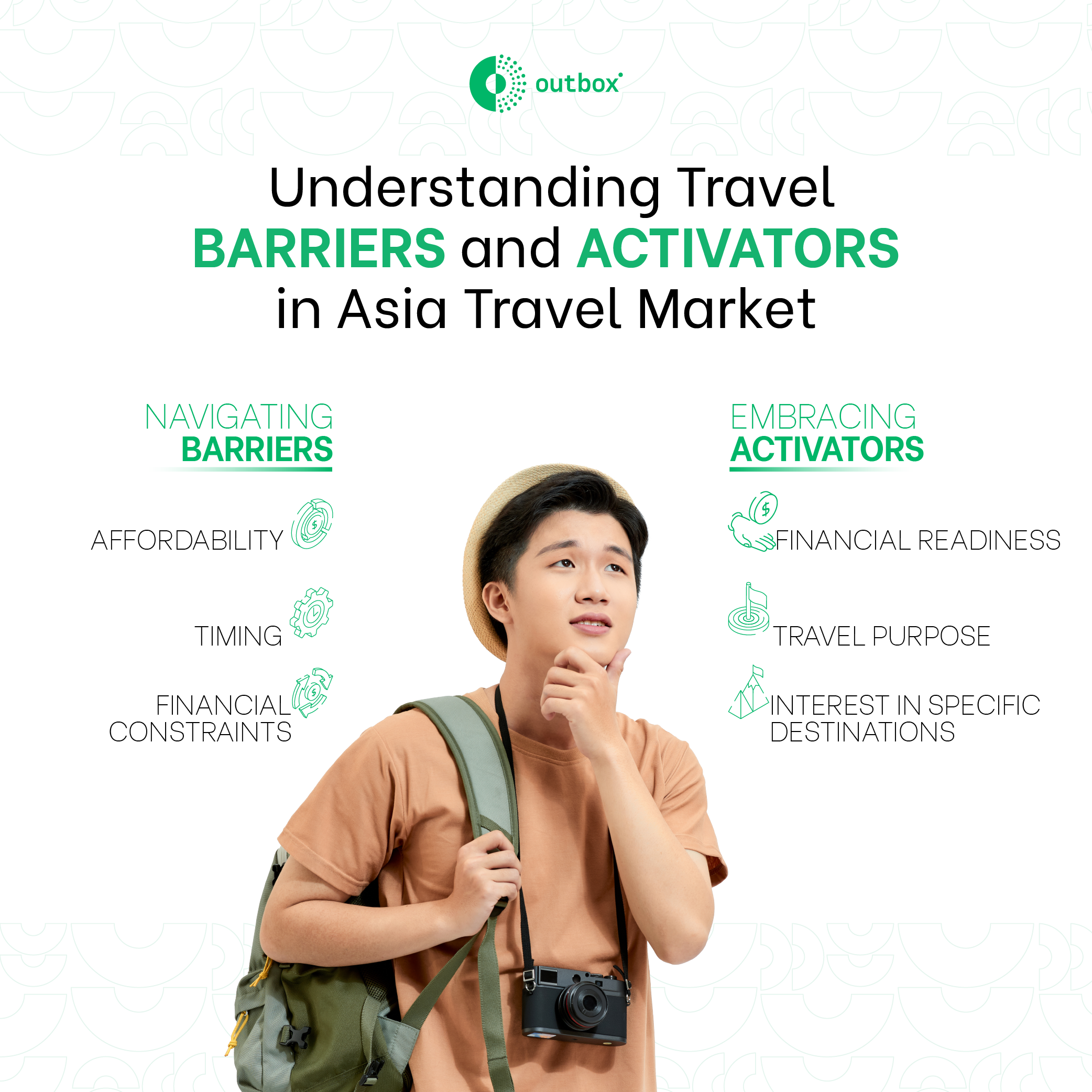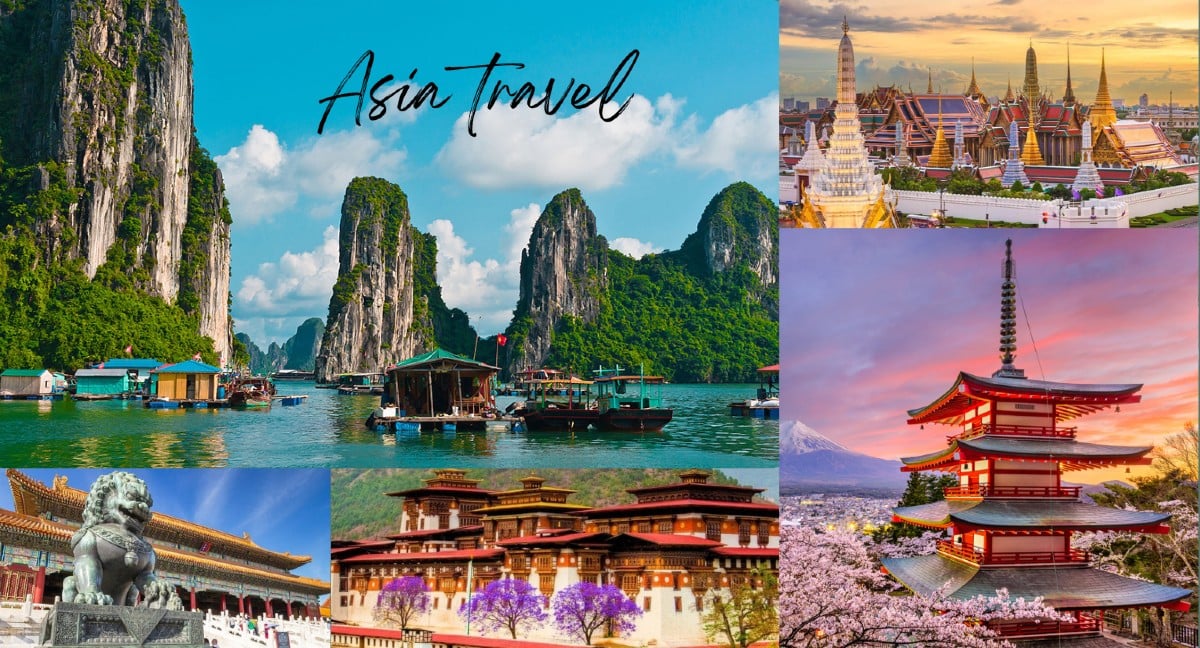Understanding the motivations and challenges facing Asian travelers is essential for businesses in the travel industry to connect with diverse audience segments. According to data in Asia Travel Market Tracker powered by Outbox, 25.8% of Asia outbound travelers do not intend to travel in the next 6 months. In this blog, we explore the key barriers and activators impacting travel behavior in Asia, and practical strategies for businesses to overcome these challenges.
 Primary Barriers to Traveling
Primary Barriers to Traveling
1. Financial Constraints and Affordability
For many would-be travelers, budget constraints remain a significant barrier. With rising costs in the tourism sector and fluctuating economies, travel has become a luxury that not everyone can afford. High travel expenses, from airfare to accommodation, can deter travelers from taking trips. This financial factor impacts directly travel intent, with many individuals choosing to postpone or forgo trips altogether.
2. Timing and Future Intentions
Another prevalent reason for delaying travel plans is timing. Many people are simply not ready to travel immediately – with 32.6% of Asian travelers surveyed planning to hold off for at least six months. This delay could be attributed to uncertainties in personal schedules, concerns over world events, or a cautious approach to long-term planning. By understanding these timing preferences, travel businesses can better anticipate and meet demand in the months or years to come.
3. Other Priorities
For 21.1% of Asian travelers, traveling is not currently a top priority, as funds are allocated to other personal or family needs. These travelers may be motivated to save for other life goals or invest in areas they consider more essential, particularly during uncertain economic times. Addressing this mindset requires a nuanced approach, emphasizing the unique benefits of travel as a valuable investment in personal experience and cultural enrichment.
Key Activators of Travel in Asia
1. Financial Readiness
Financial stability plays a crucial role in enabling travel. As individuals gain confidence in their financial situation, they are more likely to plan trips. Without concerns about travel costs or financial health, the Asia travel industry would likely witness an increased willingness to travel. For businesses, this financial readiness presents an opportunity to market packages that cater to a range of flexible budgets, making travel more accessible.
2. Interest in Specific Destinations
Certain destinations continue to attract a high level of interest among Asian travelers, with countries like Japan, Korea, and other ASEAN nations frequently topping the list of preferred destinations. Local culture, natural landscape, and accessibility play significant roles in this preference. Having a favorite destination in mind, 23.1% of Asian travelers will consider planning a trip. Highlighting the destination offerings in marketing campaigns or curating packages focused on popular spots can tap into travelers’ desire to explore these regions.
3. Travel Purpose
The dominant purpose for travel across Asia is leisure – accounting for 87.7%, emphasizing the region’s interest in relaxation, exploration, and cultural experiences. Among preferred activities, nature, city breaks, and culinary experiences also rank highly. This insight empowers businesses and destinations to design experiences and packages around these interests, promoting diverse leisure activities that resonate with the travel market.
The potential for growth in the Asian travel market remains substantial, even in the face of barriers. As financial conditions stabilize and interest in cultural exploration grows, more Asian travelers are likely to re-enter the tourism landscape. By understanding and addressing the barriers they face—and reinforcing the factors that drive travel demand—travel companies and destinations can effectively connect with and inspire Asia’s diverse market of potential travelers.

 Primary Barriers to Traveling
Primary Barriers to Traveling



